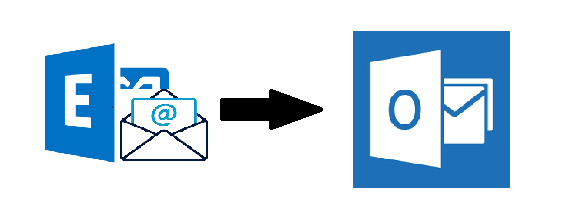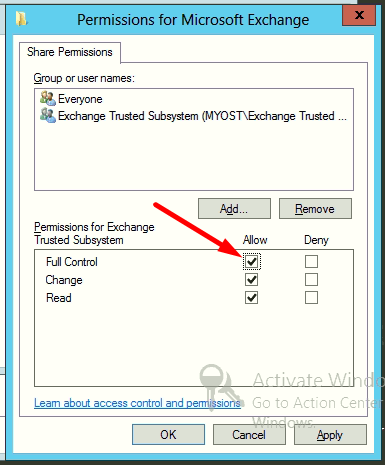How to download Emails from Exchange Server to Outlook? Get the Solution

How to download Emails from Exchange Server to Outlook? Get the Solution
If you are looking for an effective solution to know how to download emails from Exchange Server to Outlook, then you found the right article. This write-up will help you to download emails from Exchange Server mailbox to Microsoft Outlook.
Employees or users use Exchange emails is used as the best way to communicate with others in an organization or company. They used MS Outlook as the email client to access all the Exchange Server data but sometimes they are unable to connect with it. That’s why they want to download emails from Microsoft Exchange to Outlook.
When users are not able to add Exchange account with Outlook the only way is left to use EDB mailbox email and that is to download Exchange email to PST and then import the resultant file into MS Outlook. This way you can easily read/write the emails and send them to other users.
One can use the Exchange Management Shell as the manual solution and SysTools EDB File Converter as professional method to export Exchange database mailbox emails to PST file for this purpose.
Use Manual Solution For How to Download Emails From Exchange Server to Outlook
Before using the New-MailboxExportRequest command to export Exchange emails to Outlook data file, you have to provide “Mailbox Import Export Role”. By default, Microsoft Exchange doesn’t provide permission to export or import Exchange data to PST file.
Follow the cmdlet given below to assign role:

After providing the export Exchange data permission user have to create the shared folder to save the exported Exchange data. One has to provide full control to the Exchange Trusted Subsystem security group.

Then insert the cmdlet to download Exchange email to PST:

For Example:

Output File:

This solution easily download emails from Microsoft Exchange Server to PST file.
Limitation Of Manual Method
- Requires technical expertise for efficient conversion
- Risk of losing data while exporting the Exchange email to PST
- Doesn’t properly work with damaged/corrupted EDB file
- The cmdlet doesn’t export emails from different mailboxes
Due to these downsides users have to use the automated wizard which helps them do their job easily and it overcomes all the limitations that they face in manual method.
Professional Solution For How to Download Emails From Exchange Server to Outlook
EDB file converter is capable to export Exchange emails from different Exchange mailboxes (user, archive, shared, legacy, disconnected) to PST file in batch. This utility provides category filter option which allow users to export emails from offline/dismounted EDB file to Outlook data file. Then the user can import PST file into MS Outlook. Anyone can use the software because it provides graphical user interface which makes the user’s job easier. It supports public folders and private Exchange mailboxes.
The software allow you to remove corruption from .edb file by using the Quick and Advance scan option. By default, the Exchange database file goes through quick scan option and it removes minimal corruption. To recover highly corrupted EDB file you can opt the advance scan mode. This option also recovers permanently deleted Exchange mailboxes and data items.
It allow users to export entire or selective Exchange mailbox and items: emails, contacts, calendars, notes, tasks, journals to PST & different file formats: MBOX, EML, MSG, PDF, HTML. So, users can download Exchange mailbox to PST file or any other mailboxes. If you want to export contacts from Exchange public folder or any other items to Outlook data file, then it can be easily done with the help of this utility. After exporting Exchange data the tool auto-creates the export report in CSV file which contains success and fail count.
Key Features Of Automated Software
- Support Streaming Media and Microsoft Exchange database file
- Preview Exchange mailbox data items before conversions
- Export corrupt Exchange EDB file to multiple file formats
- Provide date and category filter option to convert selective mailbox data items
- Preserve original folder hierarchy and keep metadata intact
- Remove email (SMIME/OpenPGP) encryption from Exchange mailboxes in batch
- Compatible with all Exchange Server, Windows OS, and MS Outlook versions
Step by Step Method to Download Exchange Email to PST
Step 1: Download > Install > Launch the professional software in your system

Step 2: Select the Add File > Load offline/dismounted Exchange database file > Click on the add button

Step 3: Preview Exchange EDB mailboxes and data items > Click Export

Step 4: Click on Exchange mailboxes > Select the PST export option > Click on Advance settings

Step 5: Select mails from category option to download Exchange email to PST > Click on save
button

Step 6: Select the browse button to set target file location > Click on the export button

Finally, the Exchange emails are successfully exported to the PST file. Now you can import the resultant file to Microsoft Outlook
Import PST File to MS Outlook
Follow the steps given below:
Steps 1: Open Microsoft Outlook > Click on the file button
Step 2: Then, click on open & export > Select the import/export option
Step 3: Select the “import from another program or file” > Click on Next
Step 4: Select the PST file > Click Next
Step 5: Click on the browse button and select Outlook data file you want to import > Select the next button
Step 6: Insert the password if the PST file is password protected > Click on OK button
Step 7: Select the radio button “import item into the current folder” > Click on finish button
Bringing It All Together
However, the manual solution easily download Exchange email to PST but because of its certain limitations. It is recommended to use the professional solution to export emails from multiple mailboxes in batch to the PST file and import the resultant file into MS Outlook. In this process, it doesn’t require any technical expertise. I hope this write-up provides you a great solution on how to download emails from Exchange Server to Outlook.